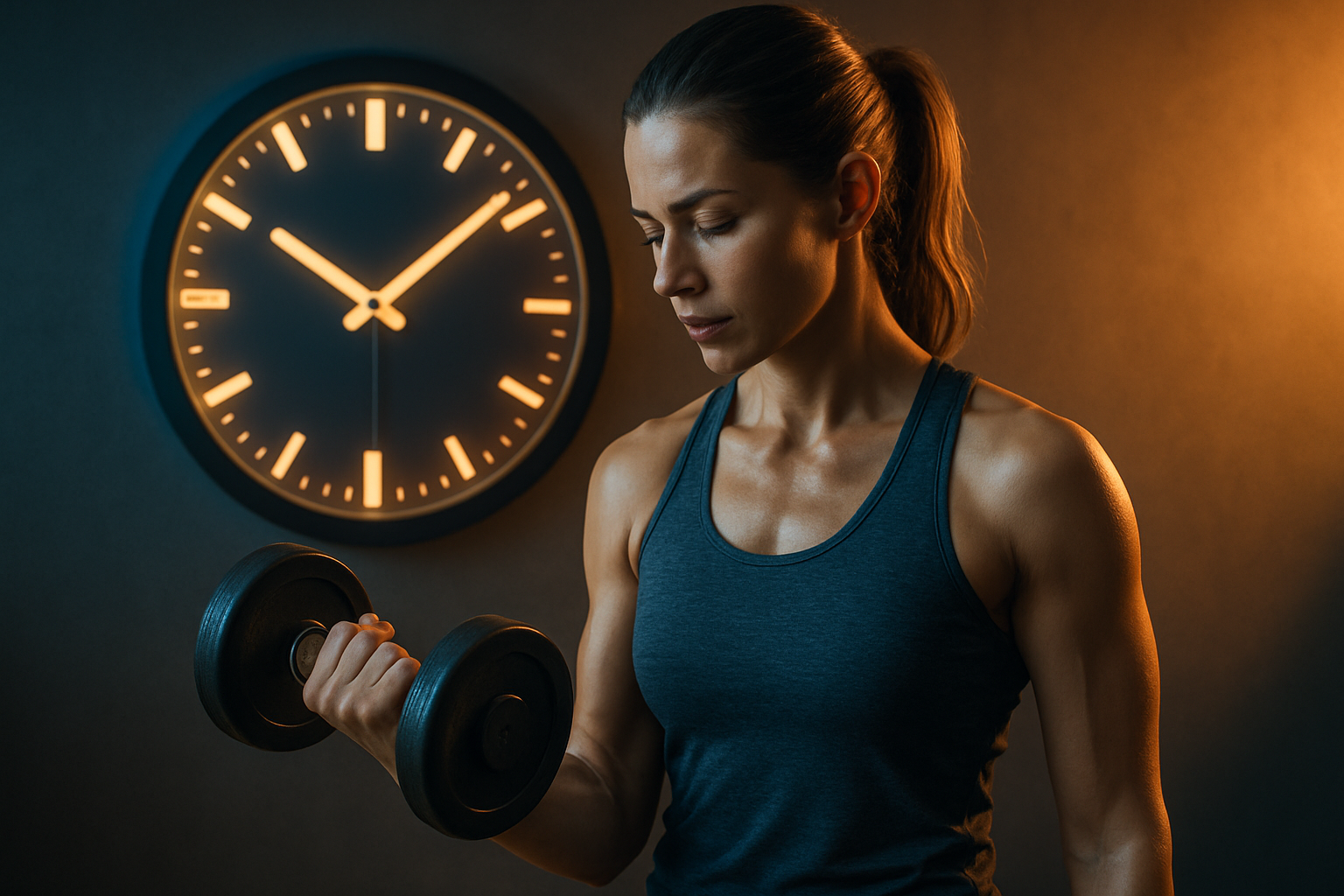Chronoexercise: Aligning Fitness with Your Body Clock
Imagine a world where your workout routine isn't just about what you do, but when you do it. What if the timing of your exercise could significantly boost its effectiveness? Welcome to the realm of chronoexercise, a cutting-edge approach that's reshaping our understanding of fitness and well-being.

The Science Behind Timing Your Workouts
Our bodies operate on a 24-hour cycle, known as the circadian rhythm, which influences various physiological processes. Research has shown that factors such as core body temperature, hormone levels, and enzyme activity fluctuate throughout the day, affecting our physical capabilities and recovery potential. For instance, testosterone levels peak in the morning, while flexibility reaches its zenith in the late afternoon. Understanding these patterns allows for strategic exercise planning to leverage these natural peaks.
Morning vs. Evening: Decoding the Optimal Exercise Window
The debate between morning and evening workouts has long divided fitness enthusiasts. However, chronoexercise suggests that both have their merits, depending on individual goals and body rhythms. Morning exercises, particularly cardio activities, may be more effective for fat burning and appetite control due to elevated cortisol levels. Conversely, evening workouts might yield better results for muscle growth and performance, as body temperature and muscle strength typically peak later in the day.
Tailoring Exercise Types to Circadian Phases
Chronoexercise goes beyond just timing; it also considers the type of exercise most suitable for different parts of the day. High-intensity interval training (HIIT) might be more beneficial in the late afternoon when reaction times are quicker and perceived exertion is lower. Yoga and flexibility-focused exercises could be more effective in the evening when the body is naturally more pliable. This tailored approach ensures that each workout is optimized for maximum efficacy and enjoyment.
Practical Implementation of Chronoexercise
Incorporating chronoexercise into your routine doesn’t require a complete overhaul of your schedule. Start by observing your natural energy patterns and gradually adjust your workout times accordingly. Experiment with different exercise types at various times of the day and note how your body responds. Remember, consistency is key – regular exercise at any time is better than sporadic workouts, even if they’re perfectly timed.
Personalization: The Key to Chronoexercise Success
While general guidelines exist, the true power of chronoexercise lies in personalization. Factors such as age, gender, sleep patterns, and even chronotype (whether you’re a morning lark or night owl) can influence your optimal exercise times. Some individuals may find they perform better with morning workouts, while others thrive on evening exercises. Listen to your body and adjust accordingly to find your personal chronoexercise sweet spot.
Chronoexercise and Sleep: A Symbiotic Relationship
The timing of exercise doesn’t just affect performance; it also impacts sleep quality. Vigorous evening workouts might disrupt sleep for some, while others find it helps them unwind. Chronoexercise principles suggest moderating intensity in the evening and focusing on relaxing activities like stretching or gentle yoga to promote better sleep. This symbiotic relationship between exercise timing and sleep quality is a crucial aspect of the chronoexercise approach.
Nutritional Timing in Chronoexercise
Chronoexercise extends beyond just workout timing – it also encompasses nutrition. The body’s ability to process and utilize nutrients varies throughout the day. Post-workout meals, for instance, might be more effectively absorbed in the morning due to heightened insulin sensitivity. Understanding these nutritional rhythms allows for strategic meal planning to complement your exercise routine and enhance overall results.
The Future of Fitness: Integrating Technology with Chronoexercise
As wearable technology advances, the future of chronoexercise looks promising. Smart devices that track not just activity but also biological markers like heart rate variability and body temperature could provide real-time recommendations for optimal workout times. This integration of technology with chronobiological principles could revolutionize personal fitness, offering truly customized exercise plans that evolve with our daily rhythms.
Embracing the Chronoexercise Revolution
Chronoexercise represents a paradigm shift in how we approach fitness. By aligning our workouts with our body’s natural rhythms, we can potentially unlock new levels of performance, recovery, and overall well-being. As research in this field continues to evolve, chronoexercise may well become the cornerstone of future fitness strategies, offering a more holistic and personalized approach to health and wellness.
Chronoexercise Insights
-
Morning exercise may boost metabolism for the entire day
-
Strength peaks in the late afternoon, making it ideal for resistance training
-
Exercising 3 hours before bedtime can improve sleep quality for some individuals
-
Core body temperature is lowest around 5 AM, making early morning the best time for endurance activities
-
Afternoon workouts might reduce the risk of injury due to increased body temperature and flexibility
-
Chronotype influences exercise preference: ‘night owls’ often perform better in evening workouts
-
Protein synthesis peaks in the evening, potentially enhancing muscle recovery from late-day strength training
In conclusion, chronoexercise offers a fresh perspective on fitness, emphasizing the when as much as the what and how. By understanding and working with our body’s natural rhythms, we can optimize our exercise routines for better performance, faster recovery, and improved overall health. As we continue to unravel the complexities of our internal clocks, chronoexercise stands poised to reshape the future of personal fitness and well-being.





